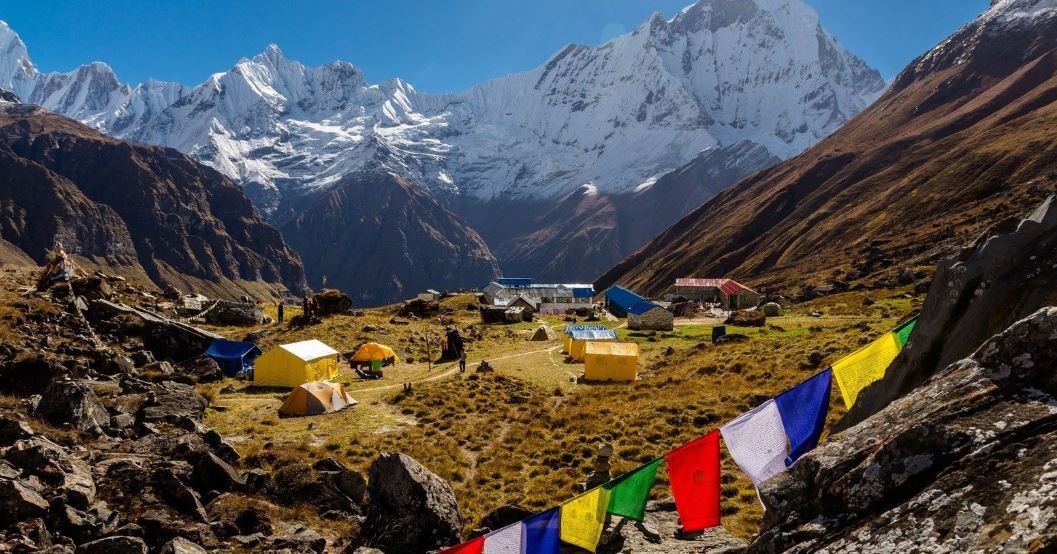For lots of intrepid travelers, an Annapurna Circuit crossing is a bucket-list accomplishment. It’s also an extremely good traverse, showcasing a wonderful variety of climates, from subtropical forests to the arid, high-altitude wilderness of the Tibetan plateau. And but, as you stand effectively atop Thorong La pass, observing closer to the distant, huge sentinel peaks of the Annapurna Massif, an exceptional sort of yearning can be born: no longer just to loop those giants, but to face them internally, their very hearts. A traditional circuit and a climb to Annapurna Base Camp is the way to experience this iconic area. This guide will walk you through how to visit Annapurna Base Camp after the Circuit, and turn an incredible trek into an all-inclusive epic adventure in the Himalayas.
The Grand Diversion: THE RETURN OF TWO LEGENDARY TRAILS
The really cool thing about doubling up in this way is how close together the two treks are. It’s far from the same route, and the final section of the Annapurna Circuit meets the start of the Annapurna Base Camp trek in the kind of fiercely attractive way only nature and common sense can allow. The trek between them begins once you’ve surmounted the circuit’s high point, Thorong La Pass, and hiked down from it to the holy village of Muktinath. There, instead of completing your hike and taking a lift from Jomsom or walking out of the Kali Gandaki Valley, you’ll press onward, to the south — on a trek that connects one legendary trail to the next, overland. It will give you a little side street into the famous Annapurna Circuit with the ABC Trek.
The course between Worlds: the adventure from Jomson to Tatopani
From Muktinath, the classic Circuit turns south down the Kali Gandaki, the private gorge on this planet, through villages like Jomson and the apple paradise of Marpha. To attain the path to Base Camp, you’ll keep southward up the valley ground until you reach the village of Tatopani. You can hike or take a local jeep from Jomson to Tatopani as per your time and availability. ‘Tatopani’ is the Nepali word for ‘hot water’, and the village has famous natural hot springs. They are excellent for stretching out tired muscles from a long day on the Throng La Pass. This stopping point makes a fantastic physical and mental handover point: you are leaving the dry, blowing landscapes of the Circuit behind and bracing yourself for that lush green hike that stands ahead of you on your additional climb to the Sanctuary.
TO DESGUSTATION THROUGH RHODODENDRON: HOW THE WORLD UNITED WITH THE GHOREPANI POON HILL TREK
It’s a sharp left from the Tatopani corner. You now quickly climb steeply, along an old stone staircase for a while higher, until the trees begin to thin out from the forest, and our way goes past a circular clearing. This segment of the trek moreover intersects with one of Nepal’s renowned trekking trails, the Ghorepani Poon Hill trek. The trek will manual you over stunning villages and vineyards in addition to alpine and rhododendron forests that burst into shade in the spring. The climb at last comes out level from the big village at Ghorepani. From here, a predawn excursion up to Poon Hill (3,210m) is a must. The panoramic view of sunrise from here looks better than any point in the Himalayas to the east and all of the Annapurnas and Dhaulagiri, with the amazing mountains you have been circling to the we, st with nothing blocking your view.
The Gateway to Sanctuary Village: Chomrong
Annapurna Circuit Trek Another forest and village trail descends as we drop down once again from the Ghorepani area to the key juncture at Chomrong village. Dramatically situated on the side of a mountain, Chomrong is the last main village that you pass through on your way to Annapurna Sanctuary. The perspectives from here on Annapurna South, Hiunchuli, and the sacred Machapuchare (Fishtail) mountain are equally mind-boggling. As you walk down long stone steps out of Chomrong, over the river, starting the up-valley run toward Sinuwa, you are trespassing onto the sacred soil of the Modi Khola valley, the only way in to that glacial cirque that holds Annapurna Base Camp.
Over the Top of the World: A mountain journey into the heart of the giants, The Annapurna Sanctuary Trail
You end at the Annapurna Circuit Trekking. Nice chunks of this skinny valley were lined with impossibly steep walls of trees, like something out of a young Tarzan movie where he bounced from one green branch to another. With every step, you may ascend and at the same time penetrate further into the mountain amphitheater, passing a series of small resorts with names like Bamboo, Dova, and Himalaya. The panorama turns into rockier and more alpine, and the forest subsequently yields to moraine and glacier. It crosses Machapuchare Base Camp (3,700 meters), wherein Amrit captures outstanding scenes of Fishtail top, before mountaineering for approximately more hours to the quit of the trail. What comes next on the trek is unbelievably lovely, as in case you are entering an enchanted, guarded territory.
The Payoff: in the Annapurna Amphitheater
The day you arrive at Annapurna Base Camp 4,100m (13,451 ft), nothing exists but surprise. You’re in a 360-degree glacial cirque, surrounded by nothing but a wall of some of the most important and maximum famous peaks on this planet. Annapurna I (10th highest in the world), Annapurna South, Gangapurna, and Hiunchuli soar above and around you, eating a rock, ice,ce and she shows that it is divine and out of this world. To be right there at the foot of these giant grandaddies nestled in the core of the massif you’ve been orbiting over weeks is pure joy and is a fine end to an epic adventure you’ve just completed.
Factoring in one or two long side treks, that gives you at least another seven to nine days extra for your combined Annapurna Circuit + Annapurna Base Camp schedule. Good news for trekkers is that if you’ve bought an Annapurna Conservation Area Permit (ACAP) and a TIMS card for the Circuit, it’s also valid for the Base Camp trek – you don’t need to get any more permits. It is a tough but ultimately rewarding project, however, and provides anyone with the time and the fitness the most complete and rich high-mountain experience anywhere in the Annapurnas – a trip that has it all.


